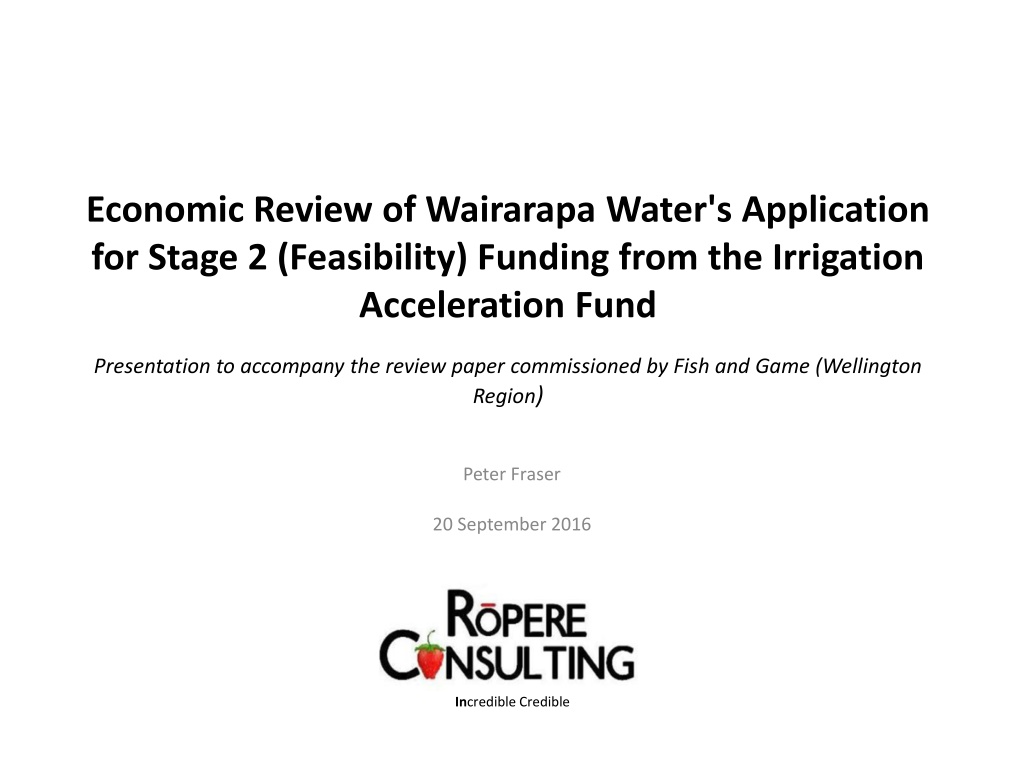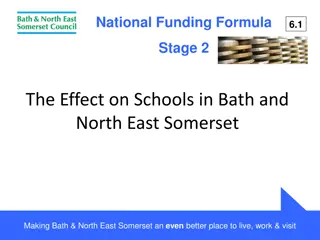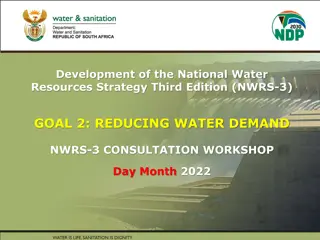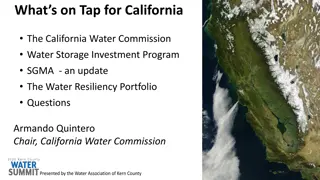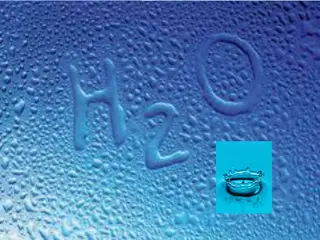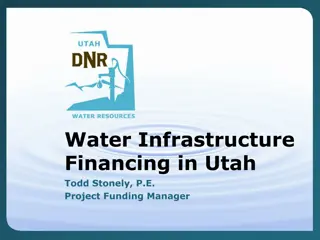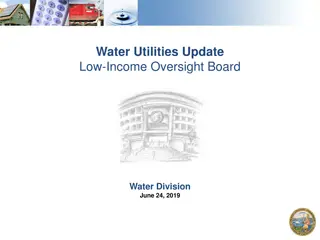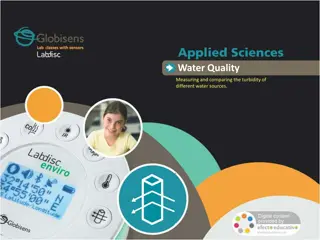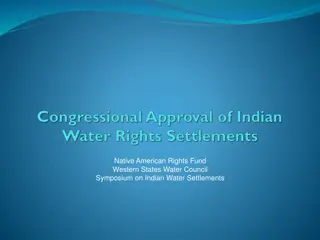Review of Wairarapa Water's Application for Stage 2 Funding
Wairarapa Water's funding application for irrigation faces process, viability, and scheme redesign issues due to outdated economic analysis and dairy-centric focus. The proposal's economic benefits and claims are based on unrealistic milk price assumptions, leading to doubts about the profitability of irrigated intensive dairy.
Download Presentation

Please find below an Image/Link to download the presentation.
The content on the website is provided AS IS for your information and personal use only. It may not be sold, licensed, or shared on other websites without obtaining consent from the author. Download presentation by click this link. If you encounter any issues during the download, it is possible that the publisher has removed the file from their server.
E N D
Presentation Transcript
Economic Review of Wairarapa Water's Application for Stage 2 (Feasibility) Funding from the Irrigation Acceleration Fund Presentation to accompany the review paper commissioned by Fish and Game (Wellington Region) Peter Fraser 20 September 2016 Incredible Credible
Executive Summary Three issues: Process problem Wairarapa Water (WW) submitted a funding application to MPI with outdated and misleading economic analysis, MPI failed to pick this up (so paid out regardless) and WW still peddle the same falsehoods unabated. Scheme viability problem WW s proposal is dairy-centric, in that 55% of the irrigated area is assumed to be conversions to intensive irrigated dairying. However, this is premised on a $7.07 milk price. Once a revised milk price assumption is applied the entire proposal collapses as dairying is unprofitable. Scheme redesign issue In the absence of a large water-intensive industry like dairying there is no justification for 100M cubic metres of storage. This implies a fundamental scheme resign.
What is Wairarapa Water claiming? Key features Economic benefits (per 10,000 ha) Black Creek 67M m3 of supply 20,000 ha irrigated $171.5M midpoint cost Wairarapa district GDP will increase by $49 million per year. Associated with this increase will be an additional $17 million per year of household income 369 Full-Time- Equivalent jobs. Tividale 30M m3 of supply 10,000 ha irrigated $82M midpoint cost Impacts of irrigation over 30,000 ha will be three times as great.
What is this based on? WW cites Butcher, 2014: http://www.waterwairarapa.co.nz/news/images/3-regional-economic-impact-report-analysis-of-proposed- wairarapa-water-use-project-october-2014.pdf Take home messages: #1: $7.07 is a completely unrealistic milk price: $5 +/- $1 reasonable #2: 45% dairy + 10% dairy support = 55% dairying across the irrigated area so accurate to describe Wairarapa Water s proposal as dairy centric
Is irrigated intensive dairy viable? WW: 2014 Baker Report Assumes milk price of $6.50 +/- 50 cents Excludes a water price (http://www.waterwairarapa.co.nz/news/images/land-use-affordability-under-irrigation-april-2014---final.pdf) R pere Consulting adjustment to Baker Revised milk price to $5.00 +/- $1.00 Includes a water price of $1000 per ha (based on irrigating 400mm per ha @ 25 cents per m3 of water) Includes sensitivity analysis at $400 per ha, using a 10 cents per m3 price
Profitability of Irrigated Intensive Dairy Step 1: Adjust milk price Step 2: Add the water price (25 cents) Marginal Increase in dairy profitability with irrigation Soil type A ($per ha) ($per ha) Milk price ($kgMS) Soil type B Soil type C ($per ha) Comment Colour code Water free 2,694 Water costs 1,694 Water free 1,613 Water costs 613 Water free 2,774 Water costs 1,774 7.00 WW base assumption Barker upper bound Barker base 6.50 1,881 881 946 -54 1,964 964 6.00 1,068 68 279 -721 1,154 154 Barker lower bound/ Revised upper bound 5.50 255 -745 -388 -1,388 344 -656 5.00 -558 -1,558 -1,055 -2,055 -466 -1,466 Revised midpoint 4.50 -1,371 -2,371 -1,722 -2,722 -1,276 -2.276 4.00 -2,184 -3,184 -2,389 -3,389 -2,086 -3,086 Revised lower bound So once water costs are added, basically need a $6 milk price...
Does a lower water price help? Marginal Increase of Disposable Surplus Soil type A ($per ha) ($per ha) 668 -145 -958 -1,555 -1,771 -2,122 -2,584 -2,789 Milk price ($kgMS) 6.00 5.50 5.00 4.50 4.00 Soil type B Soil type C ($per ha) 754 -56 -866 -1,676 -2,486 -121 -788 No. No matter how you cut it, irrigated intensive dairy in the Wairarapa needs at least a $6.00 milk price to break even and in most seasons the price is going to be less than that...
So is there an alternative? Without a large-scale and water-intensive water industry like dairy to act as a cornerstone user or anchor tenant , there s no need for circa 100M m3 of water In comparison, everything else is niche (i.e. dairy sheep) and outside of dairy, only horticulture created additional jobs (and on only 300ha) As a planning exercise, dairy is left as is and land is re-allocated across the other land use types in the same ratio assumed by Butcher.
The counterfactual Status Quo WW Irrigated % Revised Irrigated % % 10,000 10,000 10,000 Dairy Arable & mixed Sheep and beef Dairy support Horticulture Total 22 40 24 14 0.0 100% 2,200 4,000 2,400 1,400 0 10,000 45 30 12 10 3 100 4,500 3,000 1,200 1,000 300 10,000 22 43 17 14 4 2,200 4,267 1,707 1400 427 ~10,000 100% Step 1: Reallocate land across arable & mixed, sheep and beef, and horticulture Jobs (FTEs) Ha 10,000 10,000 Revised 0 -11 202 191 161 352 32 384 Dairy farming direct Other pastoral and arable direct Horticulture (or similar) Subtotal - Direct Farming Farm support in Wairarapa Total Wairarapa impacts (rounded) Farm support elsewhere in Wellington Total Wellington impacts (rounded) 90 -32 142 200 169 369 34 403 Step 2: Reallocate job ratios Result: 352 v. 369 jobs in Wairarapa and 384 v. 403 across region
What the counterfactual tells us In theory, it is possible to create a similar number of jobs but with a orientation towards horticulture However, there are caveats about horticultural jobs that need to be noted (i.e. seasonality, use of migrant labour) If you can generate 352 jobs from 427 ha, why have a proposal based on irrigating 10,000 ha?
So in a nutshell WW application for MPI funding was is based on outdated and misleading analysis that gives a completely unrealistic view of the scheme s viability and benefits (this is bad) and MPI failed to pick this up so paid out anyway(which is worse as other funders rely on MPI doing its job) and WW continues to use the same outdated and misleading data to promote its irrigation scheme and seek funding from others (which is unconscionable and disingenuous)
Conclusions WW s scheme doesn t stack up and never has WW needs to acknowledge this, revise its numbers and redesign its scheme Without irrigated dairying significantly less storage capacity is required, as everything else is niche in comparison even horticulture
Disclaimer While R pere Consulting Limited will use all reasonable endeavours in undertaking contract research and producing reports to ensure the information is as accurate as practicable, R pere Consulting Limited, its staff, employees, contributors and reviewers shall not be liable (whether in contract, tort [including negligence], equity or on any other basis) for any loss or damage sustained by any person relying on such work whatever the cause of such loss or damage R pere Consulting Limited R pereis the M ori word for strawberry, which at first glance is a strange name for a consultancy. A hint can be found in the French word for strawberry, which is fraise. Fraise was also the name granted to a French nobleman Julius de Berry, who, according to legend, was knighted after giving the King of Normandy a magnificent plate of strawberries out of season a miraculous feat in time before the advent 24 hour convenience stores. De Berry s descendants travelled with the King s descendants and fought a particularly noteworthy battle in 1066. The family, however, decided to continue north, and eventually ended up in the Highlands of Scotland whence they then spread across the globe. In the process the name was anglicised to Fraser. Incredible Credible
